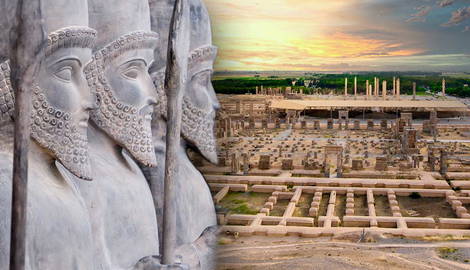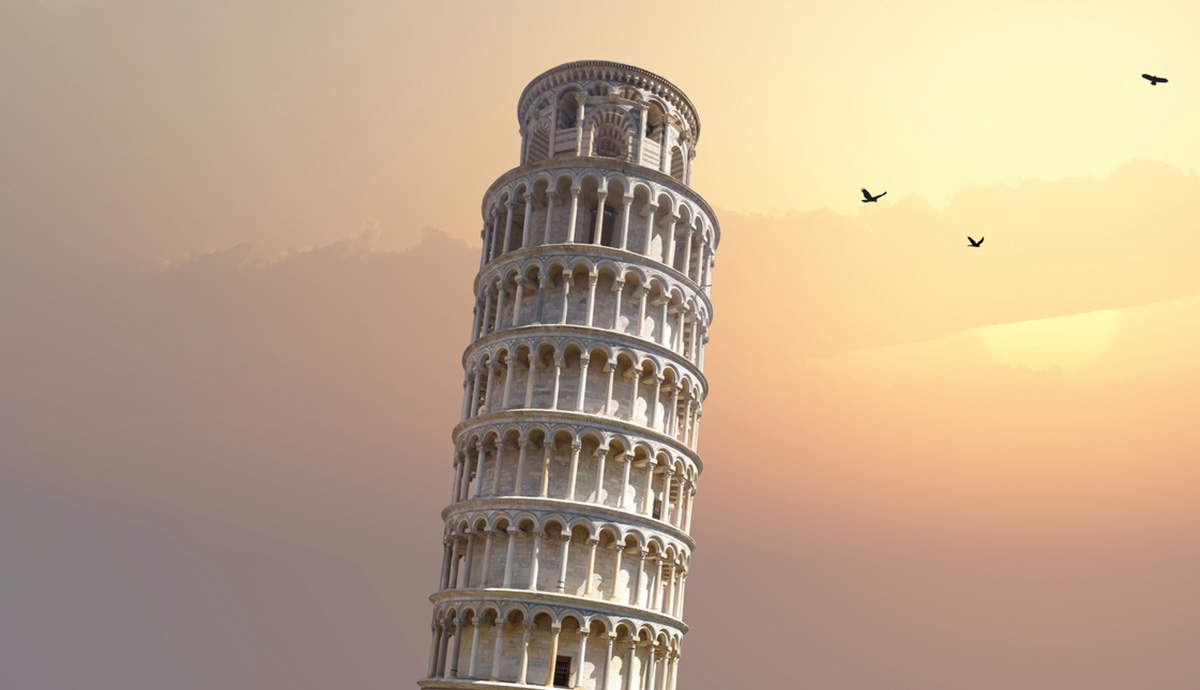
Once the heart of the ancient Persian Empire, and modern-day Iran’s most prized archaeological site, Persepolis is an absolute sight to behold. It was built as a ceremonial capital by Darius the Great to showcase the kingdom’s might, wealth, technological advancements, and artistry. Construction began in the 6th century BCE and continued for over 150 years, with Darius’s successors, Xerxes I and Artaxerxes I expanding the site and adding what are, today, some of the citadel’s most arresting highlights.
Visiting Persepolis nowadays is an easy and enriching experience.
What Is Persepolis and Why Would You Want to Visit?

The “City of the Persians”—as Persepolis translates in English—was the ceremonial capital of Persia’s Achaemenid Empire, founded by Cyrus the Great. The citadel was reserved for royal rituals, particularly the lavish Nowruz (Persian New Year) celebrations.
Alexander the Great infamously burned the masterpiece in 330 BCE as a symbolic gesture of revenge against the Persian invasions of Greece. However, some experts argue it was an accident after a night of celebration. Thankfully, not all its structures were destroyed, and what was left has been wonderfully restored.
UNESCO-listed since 1979, the citadel offers a priceless window into ancient Persia’s wealth, artistry, and reverence for its rulers. Aside from the fact that it is impeccably kept, a visit to Persepolis is mainly about experiencing the legacy of one of the most influential civilizations that ever lived—an absolute dream for ancient history lovers.
Where Is Persepolis?

Persepolis sits on a high terrace about 60 kilometers (37 miles) northeast of Shiraz, in Iran’s Fars Province. Direct flights connect Shiraz’s international airport (SYZ) to Dubai and Istanbul, ideal if you wish to bypass Tehran and concentrate your visit to the southern half of the country, where you can also visit exquisite historical cities like Yazd and Isfahan.
Expert traveler’s tip: Although local SIM cards are cheap and relatively easy to get, it is easier to come armed with an e-sim for Iran to connect you from the get-go. Download a trusted VPN before you travel, as many valuable services like Google Maps and even WhatsApp calls will not work (but writing texts is fine).
How to Get There

Persepolis is easy to reach from Shiraz by public transport or taxi, the latter being the most popular option for foreign tourists. Although you are more than welcome to rent a car and drive to the site alone, driving in Iran is slightly “spicy” so experienced rally drivers need only apply. Just kidding—but yes, experience with “fluid road-rule obeyers” is a huge plus.
Taxi rates for the day are affordable—as is everything else in Iran for foreign visitors. Enjoy your visit to Persepolis and let a friendly local drive you there. If you prefer not to be rushed to and through Persepolis, fight the urge to book an organized group tour—unless it is a private tour solely for your travel group. Even if traveling solo, you’ll be perfectly safe with a driver and your own private vehicle (naturally, do your due diligence and check reviews, as you should anywhere), but it will give you the freedom to explore the area at your own pace.
The drive takes about an hour, following well-marked roads that lead straight to the site. Just let your driver know if you want to explore other nearby historical locations, such as Naqsh-e Rostam (a royal necropolis).

Experienced Traveler’s Tip: Meander through the streets and souq of Shiraz, stop for a coffee, and you will undoubtedly be approached by local guides offering their taxi/guide services. Many will point you to their TripAdvisor reviews, so check them out and go with the one you can understand best. While English is widely spoken within the tourism sphere in Iran, fluency is hit-or-miss.
For those who prefer a more immersive cultural experience, reaching Persepolis by public transport is incredibly fun. Daily buses and minibusses run from Shiraz to Marvdasht, a town just a few kilometers from Persepolis. You can easily find a taxi to cover the remaining distance from there. The only downside here is that traveling by public transport will eat a chunk out of your visit to Persepolis, between the transit times and chats with locals (which will be abundant). Head out early.
Persepolis Opening Times, Tickets, Guides, and What to Expect

Once you arrive at the entrance gate, you’ll see a ticket office on the right-hand side, in a big, modern building. The site is open from 8 am to 6 pm, and the museum stays open for an extra hour after the site’s closing time.
The entrance fee for foreign visitors is 500.000 IRR, or around USD 12. Don’t forget to bring money in local currency (Iranian rials), as your foreign cards will not work in the country at all. The museum costs an extra 200.000 IRR.
Experienced traveler’s tip: Even the staunchest independent traveler will advise you to visit Persepolis with a knowledgeable, local guide. Passionate historians abound in the region (and around Persepolis) and can genuinely bring the site to life. And yes, this also applies if you are a seasoned historian yourself. If what you learned about Persepolis was derived from Western literature, do yourself a colossal service and visit with a local historian instead.
What You Can Expect to See

Some of the highlights to look forward to include:
The Grand Terrace: Carved into the mountain, the terrace covers an incredible 125,000 m2 (1,350,000 sq ft).
The Gate of All Nations: This grand, jaw-dropping entrance is adorned with towering statues of mythical creatures. It was built by Xerxes I as a symbolic welcome to visitors from across the empire. To say it is jaw-dropping does not come close to doing it justice.

The Apadana Palace: Built by Darius I, this was the main (and largest) audience hall, with remarkable bas-reliefs depicting people from around the empire presenting tributes.

The Tachara (Darius’ Palace): The “Hall of Mirrors,” Darius’s primary abode at Persepolis, boasts some of the best-kept embossments in the city. Below, you see an army of warriors ready for battle.

The Tripylon: The so-called “Council Hall” connects different areas of the city and contains depictions of prominent royals and dignitaries.

The Treasury: Once housing the empire’s wealth, this area included gold, silver, and precious jewels collected over decades of Achaemenid rule.
By the time Alexander the Great conquered Persepolis and brought about the beginning of the end of the Persian Empire, the Treasury held what is believed to have been the largest silver hoard in the world at the time. Alexander nabbed over 5,000 tons of the precious metal, enough to coin money during his reign and, in great part, that of his successors.

Museum of Persepolis: Housed within the restored 2,500-year-old Achaemenid Palace built by Xerxes, the Persepolis Museum showcases ancient inscriptions, pottery, and even a rare charred curtain fragment. Its collection spans the pre-Islamic, Islamic, and Achaemenid eras.

Persepolis Tablets: In the early 1900s, North American archaeologists discovered tens of thousands of clay tablets and fragments of tablets depicting cuneiform writing just outside the walls of Persepolis. They were later found to be part of one colossal system of written archives, describing all manner of administrative transactions, from sales and borrowings to crop storage and taxation. Most of the priceless tablets are housed in Tehran’s National Museum (as well as the Louvre in Paris and elsewhere), yet a few remain in Persepolis.
Best Time of Year to Visit

The ideal time to visit Persepolis is spring (March to May) or autumn (September to November) when temperatures are mild. Just keep in mind that “mild” in this region is incredibly subjective. However, both Shiraz and Persepolis sit at higher altitudes, so temperatures here are typically much cooler than in the lowlands.
Expert traveler’s tip: While you might not need to visit in the early morning to avoid crowds (group tours arrive by mid-morning, but the site is colossal enough to absorb large crowds), starting early is still a good idea. There is a lot to see, and the best lighting for photography is on either side of the lunchtime period. In summer, visiting early to avoid heatstroke is a must. Expect a comprehensive visit to last three to four hours.
Essential Tips for Visiting Persepolis

Wear sun protection: With little shade on site, hats, sunglasses, and sunscreen are essential, especially in warmer months.
Wear comfortable shoes: You’ll be walking across rocky terrain, so sturdy footwear is a must.
Come pre-hydrated: Bring water as there are limited facilities within the site, although you’ll need to dehydrate in advance as backpacks—anything other than a small handbag) are not allowed on the site. There is a small café at the northeastern end of the complex and plenty of drinking fountains around.
Head up the hill to the rear of the complex: As you walk into the site, you will notice a hill on the opposite end of the complex, straight across from the entrance towers. You’ll see caves carved into the rockface. From up here, you have the most exquisite overview of Persepolis—a delightful place for a break when you’re about halfway through your visit. This point alone is reason enough to visit early—stop here before the midday sun washes the site in glare. Morning photography from here is absolutely spectacular.
Getting your Iran visa: Reputable and authorized agencies like TapPersia can help you secure your visa to visit Iran. Entry is open to all nationalities although restrictions apply in a few rare cases. British, US, and Canadian citizens, for example, are required to visit on an approved organized tour only. TapPersia can help you arrange visas, transfers, guides, and anything else you might need.ht need.










